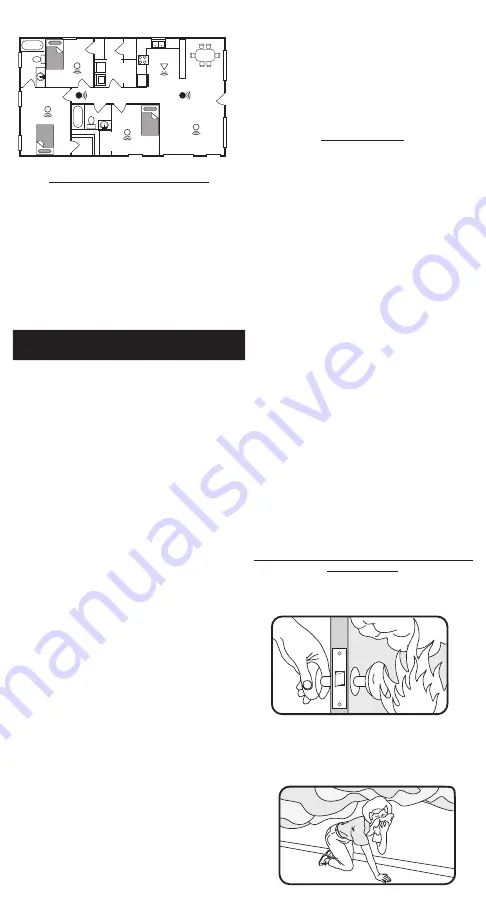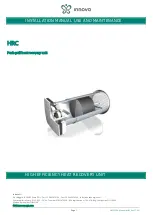
premises having a residential type
environment.
• This is not a portable product. It must be
mounted following the instructions in this
instruction leaflet.
• Heat Alarms are not a substitute for
insurance. The supplier or manufacturer is
not your insurer.
Fire Safety Hints
• Store gasoline and other flammable
materials in proper containers.
• Discard oily or flammable rags.
• Always use a metal fireplace screen and
have chimneys cleaned regularly.
• Replace worn or damaged sockets,
switches, home wiring and cracked or
frayed electrical cords and plugs.
• Do not overload electrical circuits.
• Keep matches away from children.
• Never smoke in bed. In rooms where you
do smoke, always check under cushions
for smouldering cigarettes and ashes.
• Be sure all electrical appliances and tools
have a recognized approval label.
• Heat alarms are not to be used with
detector guards unless the combination
has been evaluated and found suitable
for that purpose.
This device cannot protect all persons at all
times. It may not protect against the three
most common causes of fatal fires:
1. Smoking in bed.
2. Leaving children at home alone.
3. Cleaning with flammable liquids, such
as gasoline.
Further information can be obtained from
the Fire Department.
Planning Your Escape Route For When The
Alarms Sound
1. Check room doors for smoke or heat.
Do not open a hot door. Use an alternate
escape route. Close doors behind you as
you leave.
2. If smoke is heavy, crawl out, staying
close to floor. Take short breaths, if
possible, through a wet cloth or hold your
breath. More people die from smoke
inhalation than from flames.
Figure 2
Bedroom
Bedroom
Bedroom
Bathroom
Bath
Dining Room
Laundry
Room
Living Room
Kitchen
Checking Alarms Can Be Heard
With the Alarms sounding in their intended
locations check that the alarm can be heard
in each bedroom with the door closed, above
the sound of any TV/audio systems. The TV/
audio systems should be set to a reasonably
loud conversation level. If you cannot hear
the alarm over the sound of the TV/audio
system, the chances are it would not wake
you.
This unit is required to be installed in
conjunction with one or more Smoke Alarms.
3. Fire Safety Advice
When using household protective devices,
basic safety precautions should always be
followed, including those listed below:
• Please read all instructions.
• Rehearse emergency escape plans so
everyone at home knows what to do in case
the alarm sounds.
• Use the Alarm Test Button to familiarize
your family with the Alarm sound and to
practice fire drills regularly with all family
members. Draw up a floor plan that will
show each member at least 2 escape routes
from each room in the house. Children
tend to hide when they don’t know what
to do. Teach children how to escape, open
windows, and use roll up fire ladders and
stools without adult help. Make sure they
know what to do if the alarm goes off.
• Constant exposures to high or low
temperatures or high humidity may reduce
the batteries life.
• Nuisance alarms can be quickly silenced by
pressing the test / hush button.
• Do not attempt to recharge or burn the
batteries, as they may explode.
• If it is necessary to remove the batteries for
separate disposal, handle carefully to avoid
possible eye damage or skin irritation if
batteries have leaked or corroded.
• To maintain sensitivity to heat, do not paint
or cover the Alarm in any manner; do not
permit any accumulation of cobwebs, dust
or grease.
• If Alarm has been damaged in any way or
does not function properly, do not attempt
a repair - see section 7 ‘Getting Your Alarm
Serviced’.
• This appliance is intended ONLY for
4


























